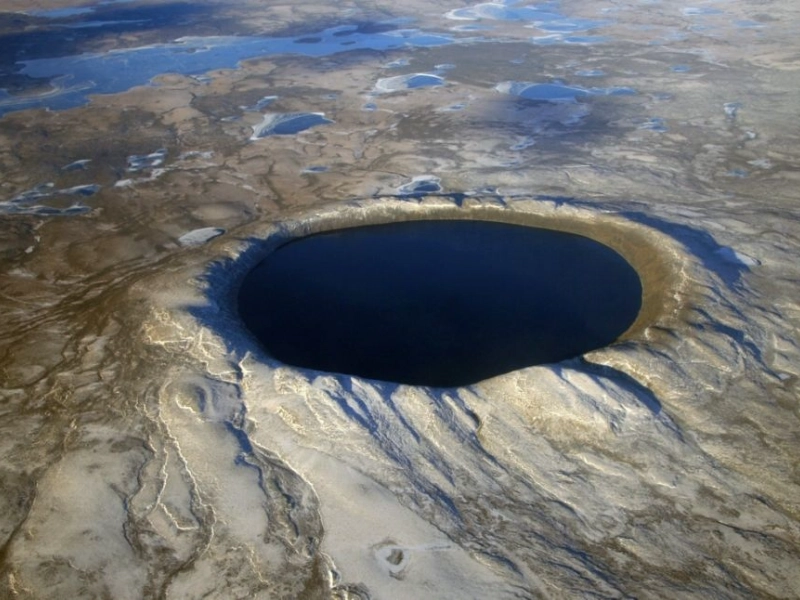These 10 Massive Craters Show How Close We've Come!
Advertisement
7. Chesapeake Bay Impact Crater (USA)

Advertisement
Underlying the Chesapeake Bay and environs on the eastern coast of the United States, the amazing hidden geological phenomenon known as the Chesapeake Bay Impact Crater has greatly affected the topography and hydrology of the area. One of the biggest buried impact structures found in North America, formed during the late Eocene period around 35 million years ago and has a diameter of roughly 85 kilometres (53 miles).
A bolide, probably an asteroid or comet around 3 kilometres (1.9 miles), struck the shallow continental shelf waters covering the area at the time, producing the crater. Instantaneously vaporising the impactor and a great volume of target rocks and water, the impact produced energy equivalent to several millions of nuclear bombs. Quickly buried in trash and sediments, the resultant crater was hidden from view and preserved under layers of newer deposits.
Early 1990s discovery of the Chesapeake Bay Impact Crater was a major scientific advance. It emerged from a mix of geological studies, deep drilling initiatives, and regional research of odd ground water properties. The presence of saltwater aquifers far inland and the odd subsidence patterns seen in the Chesapeake Bay region help to clarify many long-standing geological riddles in the area.
The great and long-lasting influence the Chesapeake Bay Impact Crater has on the groundwater systems of the area is among its most important features. The disturbed and redistributed pre-existing aquifers produced a complex hydrogeological environment. Comprising a mix of sediments and broken boulders, the crater fill functions as a large, underground store of brackish water. Given the salty crater-fill water can contaminate freshwater aquifers, this has significant ramifications for water resource management in Virginia's and Maryland's highly populated coastal districts.
Beyond only hydrology, the impact of the crater shapes and develops the Chesapeake Bay itself. Over millions of years, the impact structure produced a long-lasting zone of weakness in the Earth's crust that has affected patterns of erosion and deposition. This has thereby helped to define the contemporary Chesapeake Bay, one of the biggest and most biologically significant estuaries in North America.
Scientifically, the Chesapeake Bay Impact Crater offers important new angles on the mechanics of marine impact events and their long-term geological effects. At the time of impact, the marine target environment of the crater produced a complicated crater structure comprising a central peak ring and a large breccia lens. Understanding these characteristics aids in the better knowledge of how impacts operate in shallow marine environments, which is essential for the interpretation of comparable structures on other planets and moons.
The crater is also a valuable case study for the possible consequences on climate of significant impacts. Although not strong enough to produce worldwide catastrophic impacts, the Chesapeake Bay impact would have had major local and regional repercussions, maybe impacting local and regional climatic patterns for years or even decades following the occurrence.
Continuous study at the Chesapeake Bay Impact Crater now is producing fresh understanding. By recovering core samples from all around the crater, deep drilling initiatives have let researchers examine impact breccias, shocked minerals, and other characteristics in great detail. These investigations advance knowledge of impact processes, Atlantic coastal plain geological history, and long-term environmental consequences of major impact events.
The buried character of the Chesapeake Bay Impact Crater reminds us that tremendous events abound in Earth's geological past whose footprints might not be readily apparent on the surface. We keep finding these unseen scars on our globe as science and technology develop, each one narrating a tale of cosmic collisions and their effects on Earth's geology, hydrology, and biosphere.
Advertisement
You May Like

